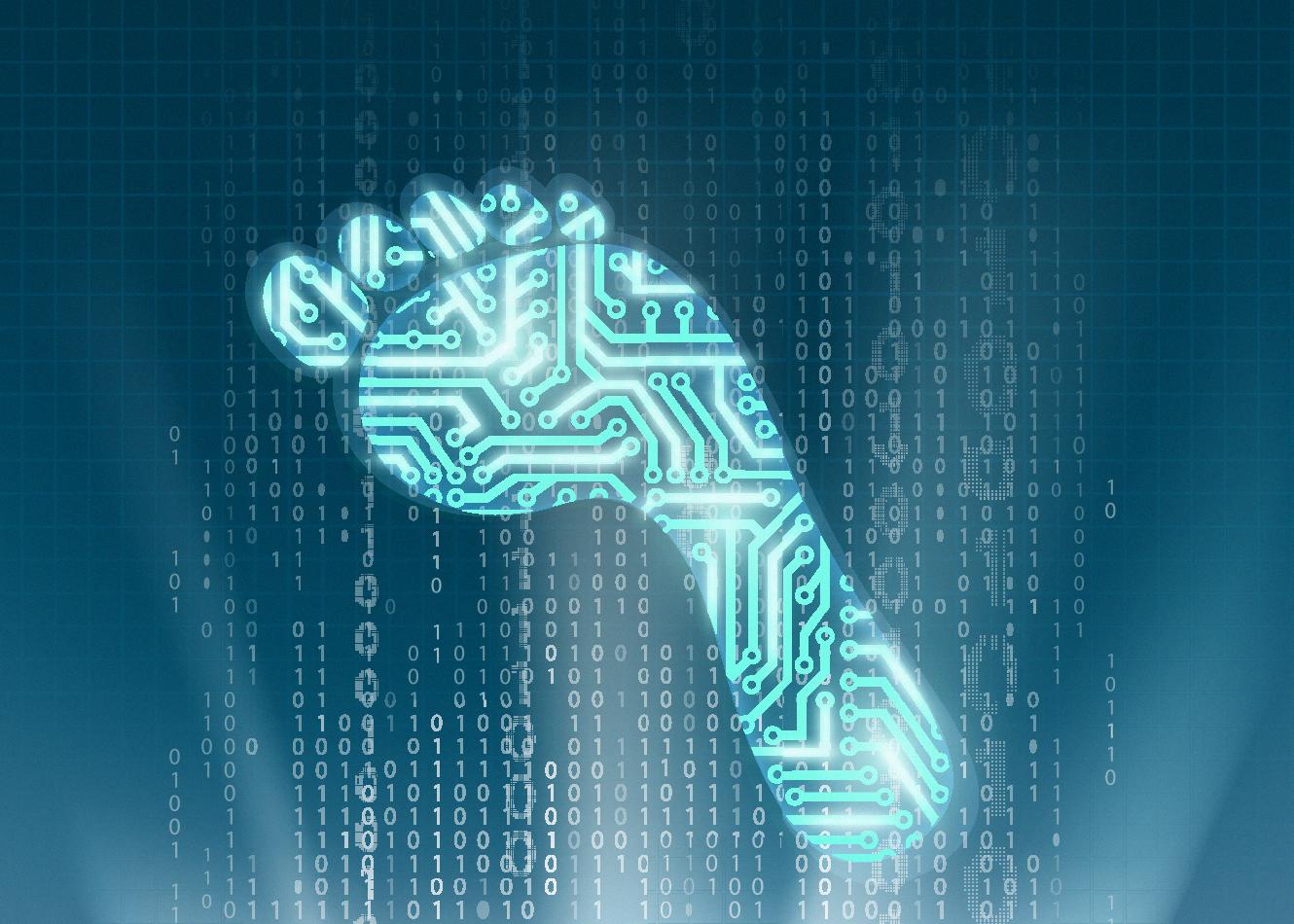Digital risk protection is an important and necessary step that businesses should take to protect themselves from potential cyber threats. In a world where digital transformation is commonplace, it is essential for businesses to understand and address the risks associated with the adoption of new technologies.
Digital risk can arise from a variety of sources, such as cybersecurity risk, third-party risk, business continuity risk, data privacy risk, and other forms of digital risk. To ensure that your business remains secure and compliant, it is important to implement a Digital Risk Protection (DRP) program.
A successful DRP program should include tools capable of attack surface monitoring, remediation management, and third-party security ratings. Additionally, you should consider monitoring for data leaks and keeping vendors compliant. This will help you identify potential weaknesses in your digital security system and take the necessary steps to mitigate them.
You can also use threat intelligence tools to detect malicious activities within your organization’s digital environment. Threat intelligence not only monitors for malicious activities but also identifies ways in which attackers may attempt to gain access to sensitive information or systems within your organization’s network. By using these tools in conjunction with DRP solutions, you can increase the chances of detecting potential threats before they become serious problems or cause irreparable damage.
Finally, when setting up a DRP program, it is important to keep your firm’s risk models up-to-date so that you can accurately assess any risks associated with new technologies or changes in existing ones. Additionally, keeping track of all exposed resources will help ensure that unauthorized users are securely locked out from accessing confidential information or systems within your network environment.
Digital Risk Protection is an essential part of any business’s cybersecurity strategy and should not be overlooked or underestimated. By implementing a robust DRP program today, you can rest assured that your business remains compliant and secure tomorrow.

Preventing Digital Risks
Digital risks can be prevented by taking a proactive and comprehensive approach to cyber security. First, you should identify all exposed assets, such as computers, networks, websites, databases, and cloud services. This will help you understand where potential cyber threats may originate. Second, monitor for data leaks – look out for signs of unauthorized access to sensitive information or systems. Third, keep risk and threat models updated so that you can quickly identify any new vulnerabilities or threats. Fourth, secure access to all exposed resources using strong authentication protocols and encryption technology. Fifth, ensure that any third-party vendors or service providers comply with your security policies. Finally, regularly back up your data in an off-site location in case of a disaster recovery scenario. By taking these measures, you can protect yourself from digital risks and ensure the safety of your organization’s confidential information.
The Risks of Digital Technology
Digital risks are the potential losses or harm that can arise from the adoption of digital technologies and transformation. These risks come in many forms, such as cyber security risks, third-party risks, data privacy risks, business continuity risks, and more.
Cybersecurity risk refers to unauthorized access to networks, systems, and data that can lead to the theft of sensitive information or disruption of services. Third-party risk addresses the potential for outside vendors or partners to compromise data security and/or present legal liability. Data privacy risk occurs when personal information is exposed due to inadequate controls over where and how it is stored. Business continuity risk refers to the failure of critical systems or processes due to technical failure or external attack.
All these risks are amplified by the rapid changes in technology and increased reliance on digital infrastructure. Organizations must have a comprehensive approach to assessing, managing and mitigating these digital risks in order to ensure their long-term success.
Comparing Digital Risk Protection and Cyber Threat Intelligence
Digital Risk Protection (DRP) is a cyber security solution designed to help organizations identify, monitor and mitigate digital risks that may lead to data breaches. It focuses on protecting an organization’s digital assets by monitoring for potential vulnerabilities, data leaks, and malware infections. DRP solutions also provide remediation management and third-party security ratings.
Cyber Threat Intelligence (CTI) is the process of gathering threat data from various sources in order to create a more comprehensive view of an organization’s cyber security posture. CTI involves collecting information from both internal and external sources such as open source intelligence (OSINT), dark web monitoring, and honeypots. The collected data is then analyzed to detect patterns or indicators of compromise, allowing for proactive measures to be taken in order to prevent attacks before they occur.
In short, DRP is focused on protecting an organization’s digital assets while CTI is focused on gathering threat data in order to gain insights into potential threats that could affect an organization.
Five Digital Security Risks
1) Phishing Attacks: Phishing attacks are malicious attempts to acquire sensitive information such as usernames, passwords, and credit card details by posing as a legitimate entity in an electronic communication. Attackers send emails or text messages that appear to be from trustworthy sources, such as banks or retailers, in an attempt to trick users into divulging their credentials. Organizations can protect themselves by training employees to recognize phishing attacks, investing in anti-phishing technology, and using multi-factor authentication for online accounts.
2) Malware Attacks: Malware is malicious software designed to damage systems or steal data. Malware can come bundled with applications, downloaded from malicious websites, or delivered through phishing emails. Organizations should ensure that all devices are running the latest version of anti-malware software and use a firewall to prevent unauthorized access. They should also use strong passwords and encrypt sensitive data when storing it electronically.
3) Ransomware: Ransomware is a type of malware that encrypts files on a computer or network until a ransom is paid by the user to regain access. It is often delivered through phishing emails or malicious websites. Organizations can defend against ransomware by regularly backing up their data and using whitelisting technologies to prevent untrusted applications from running on their networks.
4) Weak Passwords: Weak passwords are the most commonly exploited security vulnerability due to their ease of guessability and lack of complexity. Attackers can easily gain access to systems if weak passwords are used for authentication purposes. Organizations should ensure that all employee passwords meet minimum complexity requirements and that they are changed regularly as an additional precautionary measure. They should also consider implementing two-factor authentication for added protection against unauthorized access attempts.
5) Insider Threats: Insider threats refer to malicious actions taken by an individual within the organization who has authorized access to its systems and data. These threats can range from stealing confidential information for personal gain to intentionally sabotaging the organization’s operations for revenge or political gain. To mitigate this risk, organizations should implement strict policies regarding user permissions and monitor employee activities on a regular basis using audit logs and other security tools.

Source: epiphanycreativeservices.com
Common Digital Security Risks
1. Ransomware: Ransomware is a type of malicious software that encrypts or scrambles data, and then demands a ransom from the user in exchange for the unlock code. It can be spread via email, file sharing, or malicious links.
2. Phishing: Phishing is a form of social engineering attack in which attackers send emails to users pretending to be from a legitimate organization or individual in order to trick them into revealing sensitive information such as passwords and credit card details.
3. Data Leakage: Data leakage is the unauthorized transfer of sensitive information from an organization’s internal network to an external source, such as the Internet or a competitor’s database. This can happen accidentally through unsecured networks, or maliciously through data theft.
4. Hacking: Hacking is an attack on computer systems and networks with the intent of accessing, altering, stealing, or destroying data and/or system resources. Hackers use various methods to gain access to systems, including exploiting vulnerabilities in software code and exploiting weak passwords.
Common Digital Security Risks
The most common digital security risks are malware, denial of service attacks, data theft, phishing, man-in-the-middle attack, password attacks, and SQL injection.
Malware is malicious software designed to damage or gain unauthorized access to a computer system. It can include viruses, worms, ransomware, and spyware. Denial of Service (DoS) attacks attempt to overwhelm a network or system with requests for information, which prevents legitimate users from accessing the system. Data theft occurs when an unauthorized user gains access to confidential information stored on a computer or network.
Phishing is a type of online scam that attempts to steal sensitive information from unsuspecting victims. It is typically done through emails that appear legitimate but actually contain malicious links or attachments. Man-in-the-middle (MITM) attack involves an attacker intercepting communications between two parties in order to gain access to the data being communicated. Password attacks involve using stolen credentials or guessing passwords in order to gain entry into an account or system without authorization.
Finally, SQL injection is a type of attack that takes advantage of vulnerable database applications by sending malicious SQL code through user inputs in order to gain access to confidential data stored in the database. These are some of the most common digital security risks and it’s important for businesses and individuals alike to be aware of them and take steps to mitigate them.
The Leading Digital Security Risk
The leading digital security risk is the threat of cyber attacks. Cyber attacks are malicious attempts to access, disrupt, or damage computer systems, networks, or devices through various methods such as malware, phishing, ransomware, and distributed denial-of-service (DDoS) attacks. Cyber attackers can use a variety of tools and techniques to gain access to sensitive information and resources, including exploiting weaknesses in system configuration or software vulnerabilities. These attacks can lead to data manipulation, destruction of systems and networks, and financial losses due to the theft of funds, or intellectual property theft. Furthermore, cyber attackers can use stolen data for extortion or to gain unauthorized access to other accounts or services. To protect against cyber attacks, organizations must ensure their systems are up-to-date with the latest security patches and have adequate firewalls and antivirus programs in place. Additionally, businesses should educate their employees on cybersecurity best practices such as avoiding clicking on suspicious links or attachments in emails. Finally, businesses should consider utilizing additional security measures such as two-factor authentication and encrypting data both at rest and in transit.
The Three Pillars of Digital Security
The three pillars of digital security are confidentiality, integrity, and availability.
Confidentiality refers to protecting data from unauthorized access and use. This is typically accomplished by implementing strict access controls to ensure that only authorized personnel can view sensitive data. Additionally, encryption techniques such as data-at-rest encryption can be used to ensure that only those with the appropriate cryptographic keys can access the data.
Integrity refers to ensuring that data cannot be modified without authorization. This is achieved through techniques such as cryptographic hashing, which generates a unique fingerprint for each document or file that is impossible to replicate or alter without detection.
Availability ensures that authorized users have uninterrupted access to the data they need when they need it. Availability is usually maintained through redundancy strategies such as load balancing and distributed storage systems which provide multiple copies of the same information in different locations so that if one copy becomes unavailable there are other copies available for use. Additionally, measures such as disaster recovery systems help maintain availability in the event of an unexpected outage or natural disaster.
The Benefits of EDR and XDR in Cyber Security
Endpoint Detection and Response (EDR) is a security solution that provides real-time monitoring, detection, and response capabilities across all endpoints in a network. It uses advanced analytics to identify suspicious activity and alert security teams to respond quickly. EDR also provides detailed forensic analysis of endpoint data to help organizations understand the scope of a potential attack.
Extended Detection and Response (XDR) builds on EDR by extending the visibility, analytics, and response capabilities across multiple systems and networks within an organization. XDR can be used to detect threats across multiple systems and networks, such as cloud platforms, applications, email systems, web servers, databases, etc., allowing for more comprehensive threat detection. XDR also uses machine learning algorithms to automate the investigation process, providing faster response times and improved accuracy in identifying threats.
Types of Data Protection
Data protection can be broken down into three main types: physical security, data encryption, and identity and access management.
Physical security involves using physical measures to protect data from unauthorized access or manipulation. This includes measures such as locking cabinets or rooms where sensitive data is stored, as well as setting up physical barriers that restrict access to certain areas.
Data encryption is a type of data protection that uses cryptography to encode data so that it cannot be accessed without the necessary key. This ensures that only authorized users have access to the encrypted information. Encryption is especially important when sensitive data needs to be shared over a public network, such as the internet.
Identity and Access Management (IAM) is another form of data protection that helps organizations control who has access to their systems, networks, and data. IAM solutions typically involve authentication mechanisms that are used to verify the identity of users, as well as authorization mechanisms that control what actions they can take on specific resources. IAM also helps organizations manage user accounts and passwords in an efficient manner while keeping track of user activity for audit purposes.
The Benefits of Digital Risk Protection
The benefits of digital risk protection are numerous. By using digital risk protection tools, organizations can mitigate cyber threats and protect their critical assets. These tools provide actionable data to security analysts and threat researchers, allowing them to rapidly identify potential risks, analyze the severity of the threat, and put in place effective remediation strategies. In addition, digital risk protection can help organizations stay ahead of emerging threats by monitoring dark web activity and sending alerts when suspicious activity is detected. Finally, digital risk protection tools enable organizations to create a comprehensive security posture that covers all aspects of the organization’s network from the endpoint to the cloud. By utilizing digital risk protection tools, organizations can ensure that their critical assets are always protected against malicious actors.
Components of a Data Protection Plan
1. Data Classification: Creating a process for classifying data based on its sensitivity and the level of protection it requires. This includes identifying which data must be encrypted, who has access to it, and how long it should be stored.
2. Access Controls: Establishing access controls that limit who can view, use, and modify data. This includes setting up authentication processes such as passwords and two-factor authentication to verify user identity, as well as permission-based access and logging mechanisms to track user activity.
3. Data Backup: Creating a system for regularly backing up data to ensure that information is not lost in the event of an attack or system glitch. This should include both onsite and offsite backups with encryption technology to protect sensitive information from unauthorized access.
Conclusion
In conclusion, digital risk protection is a critical component of an effective cybersecurity strategy. By monitoring various data sources and using the right tools and technologies, organizations can mitigate the risks associated with digital transformation. This includes keeping track of potential data leaks, identifying exposed assets, and keeping vendors compliant. With the right digital risk protection solution in place, businesses can rest assured that their systems are safe and secure against cyber threats.








